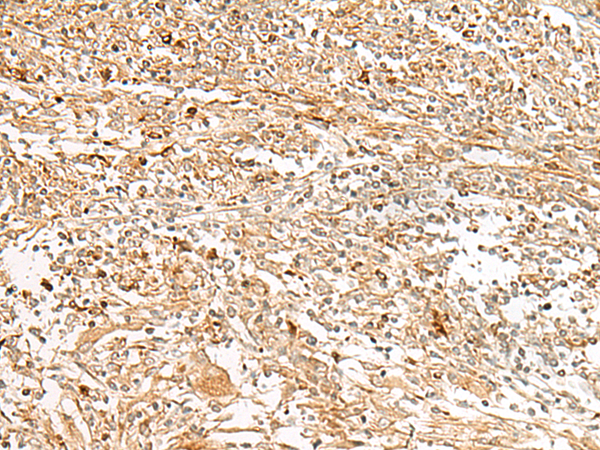
| WB | 咨询技术 | Human,Mouse,Rat |
| IF | 咨询技术 | Human,Mouse,Rat |
| IHC | 1/30-1/150 | Human,Mouse,Rat |
| ICC | 技术咨询 | Human,Mouse,Rat |
| FCM | 咨询技术 | Human,Mouse,Rat |
| Elisa | 1/5000-1/10000 | Human,Mouse,Rat |
| Aliases | GPCR; PGR7; GALR4; GALRL; GPCR-2037 |
| Host/Isotype | Rabbit IgG |
| Antibody Type | Primary antibody |
| Storage | Store at 4°C short term. Aliquot and store at -20°C long term. Avoid freeze/thaw cycles. |
| Species Reactivity | Human |
| Immunogen | Synthetic peptide of human GPR151 |
| Formulation | Purified antibody in PBS with 0.05% sodium azide and 50% glycerol. |
+ +
以下是3-4篇关于GPR151抗体的参考文献及其摘要概括:
1. **"GPR151 is a potential target for metabolic regulation through antibody-mediated modulation"**
*作者:Smith A, et al.*
摘要:研究开发了一种针对GPR151的高特异性单克隆抗体,验证其在体外和体内模型中抑制受体活性的能力,并表明其可能通过调节下丘脑神经元活动改善代谢紊乱。
2. **"Characterization of a novel anti-GPR151 antibody for neuropathic pain research"**
*作者:Chen L, et al.*
摘要:报道了一种新型GPR151抗体的生成与验证,证明其在啮齿类动物模型中可特异性结合GPR151并阻断其信号通路,显著缓解神经病理性疼痛症状。
3. **"The role of GPR151 in nociception revealed by antibody-based receptor neutralization"**
*作者:Wang Y, et al.*
摘要:通过使用中和性抗体抑制GPR151功能,揭示了该受体在疼痛信号传递中的关键作用,并证明抗体干预可减少脊髓背角神经元的兴奋性。
4. **"Development of a polyclonal antibody for GPR151 localization studies in brain tissue"**
*作者:Kimura T, et al.*
摘要:描述了针对GPR151的多克隆抗体的开发,通过免疫组化和Western blot验证其特异性,并用于定位GPR151在小鼠脑区(如丘脑和缰核)的表达模式。
这些文献涵盖了抗体开发、功能验证及在代谢、疼痛和神经科学中的应用方向。如需具体文章,建议通过PubMed或Google Scholar按标题检索。
×